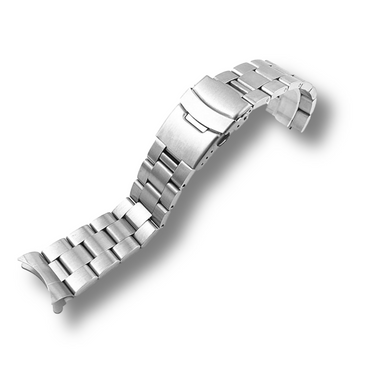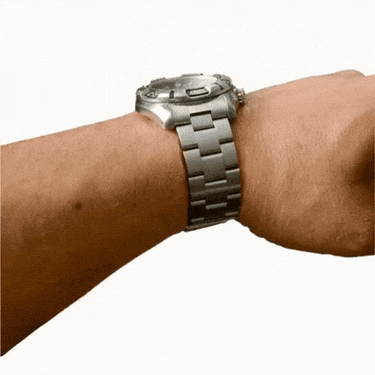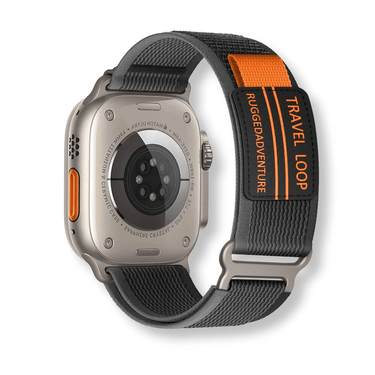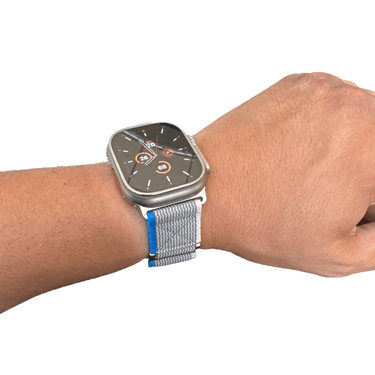Introduction
When it comes to luxury watches, Rolex has long been synonymous with elegance, precision, and craftsmanship. But what often goes unnoticed amidst the gleaming dials and intricate movements is the significant role played by Rolex's bracelets.
These exquisite pieces of artistry not only enhance the overall aesthetic appeal of a Rolex timepiece but also contribute to its functionality and comfort on the wrist. A brief overview of Rolex bracelets reveals a wide array of options available to discerning watch enthusiasts.
From the iconic Oyster bracelet to the sophisticated Jubilee bracelet, each design possesses distinct characteristics that cater to different styles and preferences. Whether you're a seasoned collector or a first-time buyer, understanding the nuances of these Rolex bracelet types becomes essential in making an informed decision.
Brief Overview of Rolex Bracelets
The evolution of Rolex bracelets dates back to the early 20th century when Hans Wilsdorf, founder of Rolex, sought to create a timepiece that could withstand harsh environments while exuding timeless elegance. This vision led to the development of the Oyster bracelet – an enduring symbol of reliability and sturdiness.
Over time, Rolex introduced various other bracelet designs, including the Jubilee – characterized by its refined aesthetics and flexibility. Each bracelet type represents an exquisite balance between form and function, aligning perfectly with different watch models offered by Rolex.
Importance of Choosing The Right Bracelet Type
Choosing the right bracelet for your beloved Rolex watch is not merely about personal taste; it significantly impacts both comfort and style. A well-suited bracelet enhances both everyday wearability and formal occasions while reflecting your unique personality. The right choice between an Oyster or Jubilee bracelet can elevate your entire watch-wearing experience.
While both options offer exceptional quality, they present distinct characteristics that suit specific horological and aesthetic preferences. Moreover, selecting a bracelet that complements your Rolex watch's design is crucial.
The wrong choice can disrupt the harmony and compromise the overall appeal of even the most exquisite timepiece. Therefore, delving into the intricacies of Rolex bracelets becomes imperative to ensure you make an informed decision that not only aligns with your personal style but also enhances the allure of your beloved Rolex watch.
Oyster Bracelet
History and development of the Oyster bracelet
One cannot delve into the world of Rolex bracelets without discussing the iconic Oyster bracelet. Introduced in the late 1930s, this remarkable piece of craftsmanship was a groundbreaking innovation by Rolex. Hans Wilsdorf, the visionary founder of Rolex, wanted to create a durable and comfortable strap that could withstand extreme conditions.
Thus, the Oyster bracelet was born. Its name is derived from the renowned Rolex Oyster case, which revolutionized waterproof watch technology.
Construction and materials used
The construction of an Oyster bracelet is a testament to Rolex's commitment to excellence. It is meticulously crafted using high-quality materials for longevity and aesthetics.
One key consideration is whether to opt for solid links or hollow links. Solid links provide exceptional strength and durability while offering a substantial feel on the wrist.
On the other hand, hollow links reduce weight while maintaining flexibility. Another crucial decision when selecting an Oyster bracelet is choosing between stainless steel or precious metals like gold or platinum.
Stainless steel bracelets are known for their robustness and resistance to corrosion, making them ideal for sporty Rolex models like Submariner or Explorer. Alternatively, if you desire a touch of luxury, consider opting for precious metal bracelets that exude elegance and opulence.
Solid links vs. hollow links
The debate between solid and hollow links often arises when debating which type of Oyster bracelet suits your needs best. Solid link bracelets offer sturdiness due to their uninterrupted construction but can feel slightly heavier on the wrist. Hollow link bracelets come with lighter weight but sacrifice some robustness in exchange for improved flexibility. Ultimately, your choice will depend on personal preference and lifestyle factors. If you lead an active lifestyle or prefer a more substantial presence on your wrist, solid links are the way to go. However, if comfort and flexibility are paramount, hollow links may be your preferred option.
Stainless steel vs. precious metals (gold, platinum)
Choosing between stainless steel and precious metals for your Oyster bracelet can significantly influence the overall aesthetics of your Rolex timepiece. Stainless steel bracelets offer a sporty and timeless look that is versatile for everyday wear. They are known for their durability and resistance to scratches, making them ideal for those with an adventurous spirit. On the other hand, choosing a precious metal bracelet adds a touch of luxury and exclusivity to your Rolex watch. Gold or platinum Oyster bracelets elevate the overall appearance and make a subtle statement of refinement. These materials require delicate care due to their softer nature but offer a distinct presence on the wrist that cannot be replicated with stainless steel.
Comfort and durability factors
Rolex's attention to detail extends beyond visual aesthetics; they prioritize wearer comfort as well. The Oyster bracelet surpasses expectations in terms of comfort due to its excellent construction techniques. The individual links are designed with rounded edges that sit smoothly against the skin, ensuring maximum comfort even during extended wear periods.
Moreover, Oyster bracelets boast remarkable durability thanks to their robust construction and use of premium materials. Whether you're embarking on outdoor adventures or attending formal occasions, this bracelet type is built to withstand daily wear while maintaining its pristine condition.
In addition to comfort, adaptability is another essential factor when considering an Oyster bracelet. Rolex incorporates an easy-to-use extension system called the Easylink extension link within many models' clasps.
This allows wearers to adjust the size by approximately 5mm without requiring any tools – perfect for those hot summer days when wrists tend to swell slightly. Furthermore, water resistance capabilities are inherent in all Rolex Oyster bracelets due to their original design concept inspired by the waterproof Oyster case.
These bracelets are engineered to accompany Rolex watches in various aquatic activities, ensuring that your timepiece remains secure and functional even in challenging environments. Stay tuned for the next section where we will explore the elegance and versatile design of the Jubilee bracelet – another remarkable offering by Rolex in their extensive range of straps.
Origins and Design Inspiration Behind the Jubilee Bracelet
When discussing Rolex watch bands, the Jubilee bracelet deserves special attention. This iconic bracelet has a rich history and a design that exudes elegance.
Introduced in 1945 to commemorate the 40th anniversary of Rolex, the Jubilee bracelet was specifically created for the Datejust model, which is still widely associated with this distinctive band style. The design inspiration for the Jubilee bracelet can be traced back to its predecessor: the Rolex Bubbleback bracelets from the 1930s.
These early bracelets featured rounded links that provided comfort and flexibility. Building on this foundation, Rolex designers sought to create a bracelet that not only offered exceptional comfort but also exuded a sense of refinement.
Unique Characteristics and Features
One of the standout features of the Jubilee bracelet is its five-piece link construction. Unlike other Rolex watch bands that typically consist of three links per section, each segment of the Jubilee bracelet is composed of five smaller links.
This additional complexity enhances flexibility and allows for greater articulation when worn on the wrist. The center links of the Jubilee bracelet are polished to perfection, creating a captivating contrast against brushed outer links.
This combination adds depth and visual interest to the band's overall appearance. The polished center links gleam under light, while brushed outer links provide a subtle sophistication that complements both formal attire and everyday wear.
Style Considerations
Elegance and versatility are defining characteristics of Rolex bracelets, and the Jubilee is no exception. Its refined aesthetic makes it particularly suitable for formal occasions. When paired with a classic Datejust or Day-Date model, this bracelet elevates any outfit with its understated luxury.
However, what sets apart this bracelet from others in Rolex's collection is its compatibility with different watch models. Though initially designed for Datejust watches, the Jubilee bracelet is now available as an option for various Rolex models.
This means that whether you prefer a sporty Submariner or a more sophisticated Datejust, the Jubilee bracelet can be an excellent choice to enhance your timepiece. In terms of versatility, the Jubilee bracelet offers different color options and materials, such as stainless steel, yellow gold, white gold, and Rolesor (a combination of stainless steel and gold).
The availability of these variations allows you to customize your Rolex watch to match your personal style preference. With its timeless design and adaptability across different Rolex watch models, the Jubilee bracelet combines elegance with functionality—a true testament to Rolex's dedication to quality craftsmanship.
Remember: when considering Rolex bracelets or watch bands in general, the Jubilee stands out for its unique construction and refined appearance. Whether attending a formal event or simply going about your day, this iconic bracelet adds a touch of sophistication to any wrist it graces.
Comparison between Oyster and Jubilee Bracelets
Design differences in appearance
When it comes to the design of Rolex bracelets, both the Oyster and Jubilee boast their unique aesthetic qualities. The Oyster bracelet, known for its iconic three-link configuration, exudes a sporty and robust vibe. On the other hand, the Jubilee bracelet showcases a more refined and elegant look with its five-link construction.
Link style, thickness, and width variations
In terms of link style, the Oyster bracelet features broader and thicker links compared to the Jubilee bracelet. These wider links provide a bolder presence on the wrist, ideal for those who prefer a more substantial feel. On the other hand, the Jubilee bracelet showcases narrower links that contribute to a sleeker appearance suitable for dressier occasions.
When it comes to thickness variations, both bracelets offer different options based on Rolex watch model and wearer preference. Thicker links can add weight to the timepiece while thinner ones provide a lighter feel.
Regarding width variations, Rolex offers different sizes of both bracelets to fit various watch models. The Oyster bracelet typically ranges from 18mm to 22mm in width while the Jubilee bracelet usually spans from 16mm to 20mm.
Bracelet tapering options
Rolex provides tapering options for both types of bracelets for enhanced comfort and aesthetic appeal. Tapering refers to reducing the width of the links as they reach towards the clasp or buckle end. This design feature allows for better flexibility around the wrist while maintaining a visually pleasing balance.
The Oyster bracelet often offers more noticeable tapering starting from around two-thirds of its length towards its closure end. On the other hand, Jubilee bracelets tend to have a subtler tapering effect throughout their length.
Functionality aspects
Comfort levels during daily wear: Both the Oyster and Jubilee bracelets are designed with wearer comfort in mind. The Oyster bracelet's solid links provide a secure fit while flexing smoothly with the wrist movements.
Its robust construction ensures durability, making it suitable for active lifestyles. Meanwhile, the Jubilee bracelet's five-link design offers excellent flexibility and a lighter feel on the wrist, perfect for extended wear.
Adaptability to different wrist sizes: Rolex offers various sizes for both bracelet types to accommodate different wrist sizes.
The Oyster bracelet's adjustability comes from removable links, allowing for precise adjustments to achieve a tailored fit. Similarly, the Jubilee bracelet includes removable links and an Easylink extension system that provides an additional 5mm of length adjustment without using tools.
Suitability for specific Rolex watch models
Oyster bracelets: sporty timepieces (Submariner, GMT-Master): The rugged and versatile Oyster bracelet is often paired with Rolex sport watches like the Submariner and GMT-Master series.
Its robust construction, water resistance capabilities, and sporty appearance make it an ideal choice for those seeking adventure or water-related activities. Jubilee bracelets: dress watches (Datejust, Day-Date):
The elegant and refined Jubilee bracelet perfectly complements Rolex's dress watches such as the Datejust and Day-Date models. Its sophisticated five-link construction enhances the luxury appeal of these timepieces, making them ideal companions for formal occasions or everyday elegance.
When comparing Rolex bracelets like the Oyster and Jubilee styles, one must consider their design differences in appearance such as link style variations in thickness, width options along with tapering choices. Functionally speaking, both provide exceptional comfort during daily wear and adaptability to different wrist sizes through adjustable features.
Moreover, each type suits specific Rolex watch models; Oyster bracelets for sporty timepieces and Jubilee bracelets for dress watches. Ultimately, the choice between these remarkable Rolex bracelets lies in the wearer's personal style preferences and the intended purpose of their timepiece.
Additional Considerations when Choosing a Rolex Bracelet
Personal preferences in terms of aesthetics
When it comes to choosing a Rolex bracelet, personal taste plays a crucial role. The Oyster and Jubilee bracelets offer distinct visual characteristics that cater to different preferences. The Oyster bracelet, known for its robust and sporty appearance, is often favored by those seeking a more rugged and adventurous look.
On the other hand, the Jubilee bracelet exudes elegance and sophistication with its intricate five-piece link design, making it an ideal choice for formal occasions. Consider your own style and the image you want to project when selecting between these iconic Rolex straps.
Price differences between Oyster and Jubilee bracelets
Another factor worth considering is the price difference between Oyster and Jubilee bracelets. Generally speaking, Oyster bracelets come at a lower price point compared to their Jubilee counterparts. This discrepancy can largely be attributed to the materials used in construction.
While both bracelet types are available in stainless steel variations, the Jubilee bracelet often features precious metals like gold or platinum, which naturally drive up the cost. It's essential to establish your budget before making a decision and weigh it against your desired aesthetic and functionality.
Impact on resale value
Resale value is a crucial aspect for many watch enthusiasts when investing in luxury timepieces like Rolex watches. While both Oyster and Jubilee bracelets retain their value well, certain factors may influence their resale potential differently.
The popularity of specific models with either bracelet type may vary over time due to trends or shifts in consumer demand. Additionally, some collectors may have personal preferences towards one bracelet type over another, affecting market desirability accordingly.
Conclusion
When comparing Rolex straps or Rolex watch bands such as Oyster vs. Jubilee bracelets, several factors should be considered.
Personal aesthetic preferences are key, as both bracelets offer distinct styles to match the wearer's taste. Price differences between the two can impact decision-making, but it's important to remember that quality and craftsmanship remain consistent across Rolex offerings.
While resale value may fluctuate based on trends and individual collector preferences, investing in a Rolex with either bracelet type is an enduring choice that speaks to luxury and refinement. So go ahead and make your decision with confidence, knowing that your chosen Rolex bracelet will complement your watch beautifully for years to come.
























